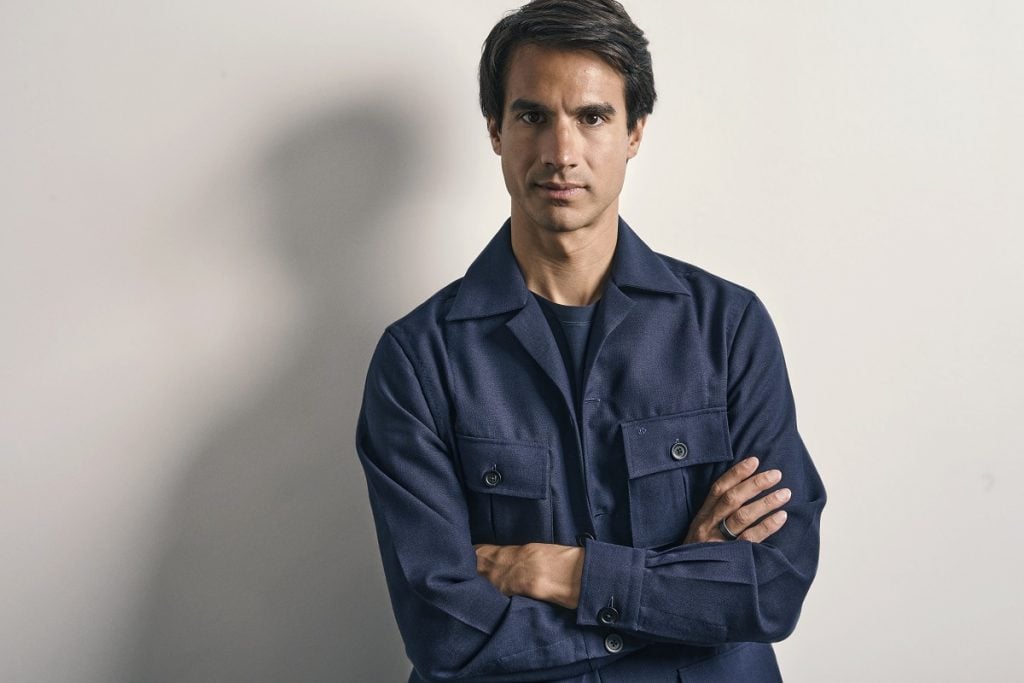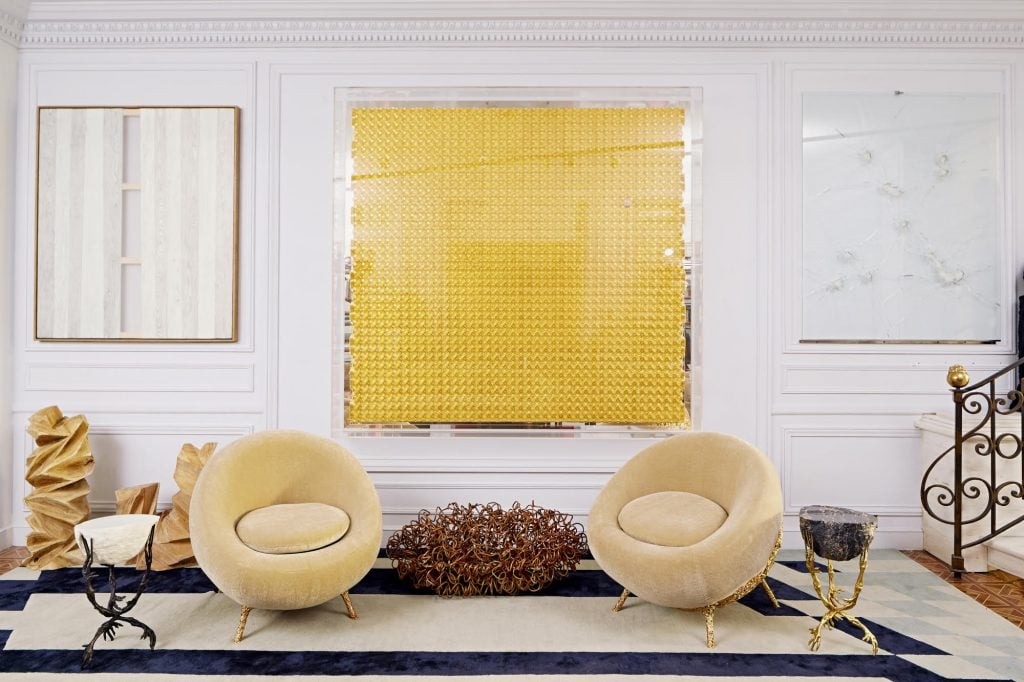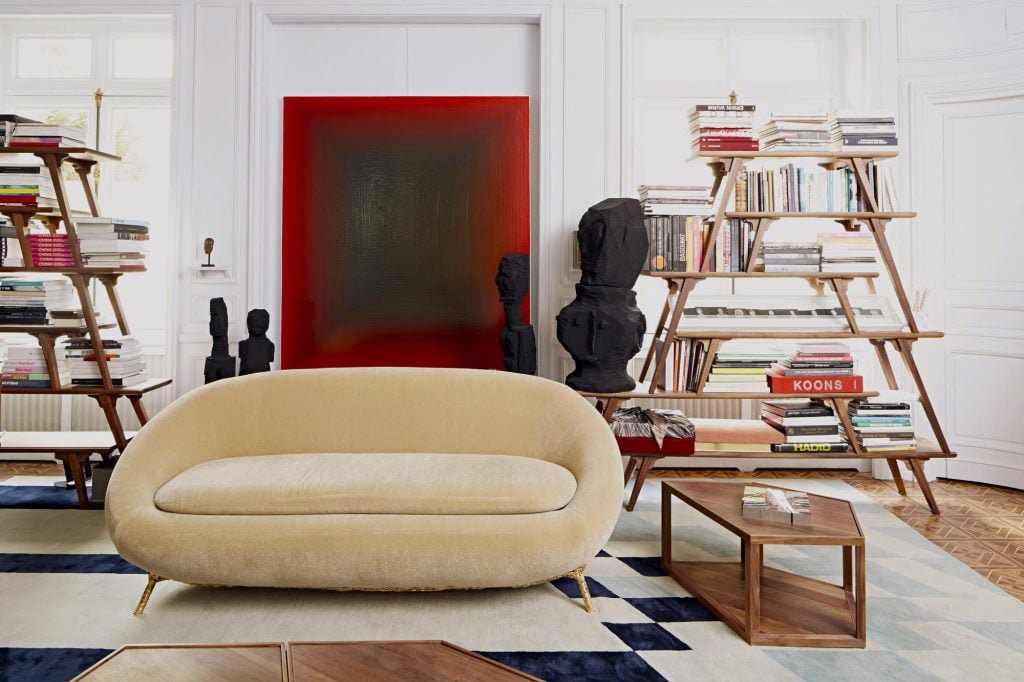People
What I Buy and Why: John Dodelande on His Passion for Chinese Contemporary Art and Forging Links Between East and West
We spoke to the entrepreneur operating between the fields of art and technology about his collecting journey.

We spoke to the entrepreneur operating between the fields of art and technology about his collecting journey.

Artnet News

Inspired by the trade routes of the Silk Road and how artistic inspiration traveled from East to West, John Dodelande has always been passionate about finding the meeting points between both cultures. Based in London, the 30-something collector has, since his early 20s, amassed a significant collection of Chinese contemporary art, with pieces by many of the country’s most notable living artists, including Jia Aili, Wang Guangle, Liu Wei, He Xiangyu, Li Shurui, Wang Yuyang, Zhao Zhao, and more.
As the first to exhibit contemporary Chinese artists in Georgia, Dodelande hopes to continue to show Chinese art the world over. Additionally, he is enthusiastic about the future of art and tech, and recently collaborated with Adrian Cheng to co-author Chinese Art: The Impossible Collection, a curated, 194-page tome examining present-day Chinese art and society, providing historical and visual deep dives into nearly half a century’s worth of the country’s greatest masterpieces.
Recently, we talked to Dodelande about how he got his start with collecting, what the American and European art worlds can learn from the Chinese context, and what the future of NFTs looks like.
How did you first fall in love with art? What brought you to the art world?
I think what brought me to the art world was a project I did in 2010 with Xavier Veilhan, the French artist. After his incredible Versailles exhibition, I asked him to build me a boat—a sailing boat—which I produced. We sold it at a French auction house as an art piece at a European exhibition.
What was your first purchase (and how much did you pay for it)?
I also acquired my first piece from Veilhan, which was a shark. He’s very famous for his sharks, and had created a shark for this boat work. There was one additional shark that he made. It became the first work in my collection.
What was your most recent purchase?
I recently got a piece by Emma Stern. She’s American. I discovered her via Instagram. I think her work represents my taste in a sense, because what Emma talks about is exactly what brings Western and Eastern collectors together. It’s so Gen Z, and made for a crypto audience—and that’s not really the average art buyer today, you know? It’s still an emerging audience. But her work is interesting, because she doesn’t come from the crypto world or from the NFT world, but she’ll be collected by the NFT and crypto audience nonetheless.
The interesting thing is that these artists are making real artworks. And you will see, even in a year, NFT artists will be doing real paintings. It’s sort of funny that NFT artists don’t seem to believe in NFTs [laughs]. It’s like how Damien Hirst, a contemporary artist, doesn’t collect contemporary art. He buys masterpieces: Rothkos, Impressionist, or Modern artists. Beeple is now a superstar between art and NFTs, and now he’s doing, like, real sculpture. And maybe he will continue to sell NFTs, but probably less and less. So I’d like to ask them, “Do you really believe in your own art?” And Emma Stern, she’s in the middle of all this. I also bought a work by Mostafa Sarabi from Iran, who just had a show in Beijing. And apparently it’s a success there.

A view of Dodelande’s living room, which features a work by He Xiangyu. Courtesy of John Dodelande.
Which works or artists are you hoping to add to your collection this year?
Maybe more of what I currently collect!
You are a noted young collector of Chinese art. Tell me a little about why you are passionate about Chinese art, and how you began collecting it.
When you read [the influential American art dealer] Leo Castelli’s book, you feel that few galleries and dealers have formed a real community around them, at least in the Western art world today. You don’t have this aspect of community anymore, really, with contemporary American and European artists and gallerists. Today, almost everything is about community, but you don’t see one there. There’s a feeling of fighting or competition between them. Like, how many times will galleries or dealers in Europe or the U.S. reply to your message and say, “No, I don’t give opinions on artists from another gallery” if you ask them about their thoughts on someone they don’t work with or represent themselves? That doesn’t make any sense to me.
Whereas when you go to Beijing, you can talk to the top dealers, the top galleries, and the top artists, and they will always say nice things about other artists, galleries, and dealers. They respect each other. When you go to a gallery dinner with an artist, the dinner party isn’t comprised of collectors and socialites. It’s mostly other artists from other galleries and true friends. Take the Jia Aili and Gagosian dinner—I wasn’t there, but I asked about how it went, and I’m close to Jia—where the attendees were Larry Gagosian, Jia, a few famous artists, and then some of Jia’s friends from Beijing, who weren’t really in the art world—like, someone who owned a whiskey shop was there. So what does that say? It says that this market puts the artists in the center. That’s what I appreciate most about the Chinese and Asian art markets: the sense of community, of honesty, is strong, and it translates to everyone.
Totally. Sorry to ask this next one, but it’s kind of how these interviews go: What is the most expensive work of art that you own?
No, I can’t answer that. [laughs]
Fair enough. Where do you buy art most frequently?
It’s easier to say where I don’t buy art. I don’t buy art in a rush during the fairs. I don’t buy art at auction. I always work with galleries. When I am interested in an artist, I go deeply into studying their practice and work. Before I buy, I like to understand the artist’s broader career, so that when I make the purchase, I know exactly what I’m buying and how it fits within the context of their work. I like to have personal relationships with artists when possible, or I try to get access to their archival work and background through the gallery.
Is there a work you regret purchasing?
Not really. It’s not about regret; it’s maybe more that some works don’t make sense for me anymore, but that’s life—the more we grow, the more we know what we want in life, and so on. It’s part of the individual process for everyone, I think, to develop your taste.
What work do you have hanging above your sofa? What about in your bathroom?
Above my sofa, I have a Wang Guangle and a He Xiangyu. In my bathroom, there a few small works just before the entrance, but nothing inside.

A work by Wang Guangle takes center stage. Photo courtesy of John Dodelande.
What is the most impractical work of art you own?
Probably a big installation? I’m not sure which. You buy it and then you don’t find the right space and it’s a problem. I’m not someone who likes to live in big spaces, either.
What work do you wish you had bought when you had the chance?
There’s always artwork I miss, but it’s usually from an artist I already collect or know, so it’s fine. But in the current market, things go so fast, and I can’t follow everything. So I just focus on what I know and what I believe. I am a person of conviction and I don’t like to buy based on trends. I like to take time to think about it, and give the artist a chance to develop their career.
Turning to the art-world projects you’re working on now, what are you currently focused on?
There are some things I’m working on now that I’m not able to share just yet—but what I will say is that they’re all focused on the space between art and tech. Art and education are the two last areas that haven’t been completely disrupted by technology. When we talk about disruption, we have to define what that means. In this case I’m talking about something replacing something else. In the case of NFTs, they’ll never actually replace other art forms; they bring a new audience and a new market, complementary to the current art market. There’s a lot of room to innovate, because the art market hasn’t really changed for more than 100 years, so for sure things will happen. I’d like to help bring this field up to date. I’ll have more to share soon.
Do you think NFTs will continue to have such a big future in the art world?
Yes. They’re not a fad. It might look that way today, but it’s a trend in exactly the same way that in 2000 you had all these dot-com projects. It’ll whittle down, in the same way that the only successful website remaining from that era is Amazon. All the other dot-com companies went bankrupt. It’s the same, I think, with what’s happening today with NFTs….We don’t know yet who the champions will be, but NFTs will last for sure.